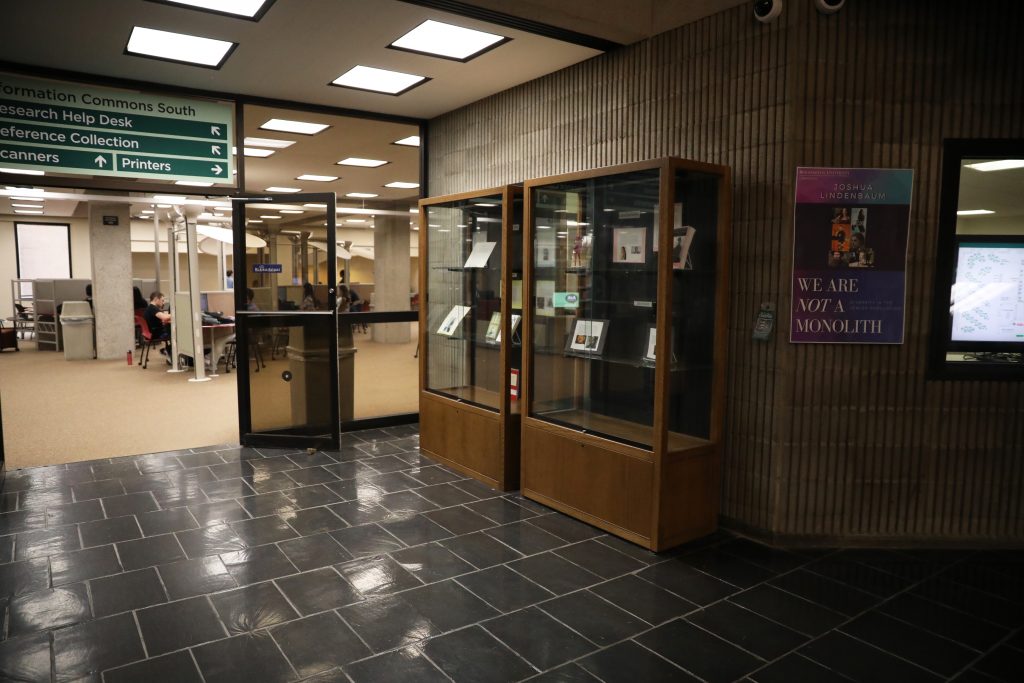
In the lobby of Glenn G. Bartle Library, students and faculty may notice a new exhibition dedicated to diversity in the Jewish community.
The display, titled “We are not a monolith: Diversity in the Jewish Population,” consists of pictures of celebrities and notable figures from heterogeneous Jewish backgrounds. The exhibition was conceived through the Bartle Lobby Guest Curator Program by Binghamton University student Joshua Lindenbaum, ‘19, a first-year Ph.D. candidate studying English.
Lindenbaum, who is Jewish, got the idea for the display after experiencing anti-Semitism firsthand and observing the stereotypes and narratives about the Jewish population. Lindenbaum wrote in an email that the anti-Semitism he encountered has dehumanized him.
“I have experienced anti-Semitism firsthand — it’s a painful experience when someone doesn’t see you … they see a caricature instead,” Lindenbaum wrote. “I have experienced some statements that felt like a punch to the stomach; a person who just met me who knew I was Jewish called me ‘conniving’ as he assumed all Jews were.”
Lindenbaum also emphasized examples of anti-Semitism seen in recent news, such as the Pittsburgh synagogue shooting in 2018 and rates of hate crimes against Jews, which increased by 37 percent from 2016 to 2017, according to the Federal Bureau of Investigation. He said he wanted the exhibition to focus on diversity in the Jewish community through this lens.
“My goal was to show the diversity [among] the Jewish people to combat false narratives and stereotypes that have had disastrous consequences,” Lindenbaum wrote. “In other words, I wanted to empirically demonstrate that one cannot pin down the Jewish people: there are Jews of all different races, nationalities, ideologies.”
According to Lindenbaum, the display is multifaceted and is intended to attract audiences of all religions and beliefs. Lindenbaum wrote the primary objectives is to promote tolerance and get viewers to question any stereotypes they have of Jews or other ethnicities.
“This is not just for Jewish people,” Lindenbaum wrote. “I’m hoping that if a person can re-evaluate his or her false conceptions about the Jewish people, he or she then can also revisit their stereotypes of other people, thereby, perhaps, getting them to question false narratives and leading to more peace in the world.”
Julia Horowitz, a sophomore majoring in integrative neuroscience, said the display is important to members of the Jewish community at the University because it encourages them to take pride in who they are.
“I think exposing students to the various backgrounds of the Jewish community is a great way to share pride in what’s more of a culture than just a religion,” Horowitz said. “It also encourages acceptance of everyone for who they are.”
Lindenbaum plans on adding a notebook to the exhibition where visitors will have the opportunity to share stories of when they were stereotyped. He wrote that he hopes the book will inspire writers to share from a place of informative compassion.
“An [exhibition] is not going to end anti-Semitism or racism,” Lindenbaum wrote. “However, if I can get just one person to question an [ignorantly held] belief, then I have done my part in materializing Tikkun Olam, to heal the world.”
The display will remain in the Bartle Library lobby until next fall.


